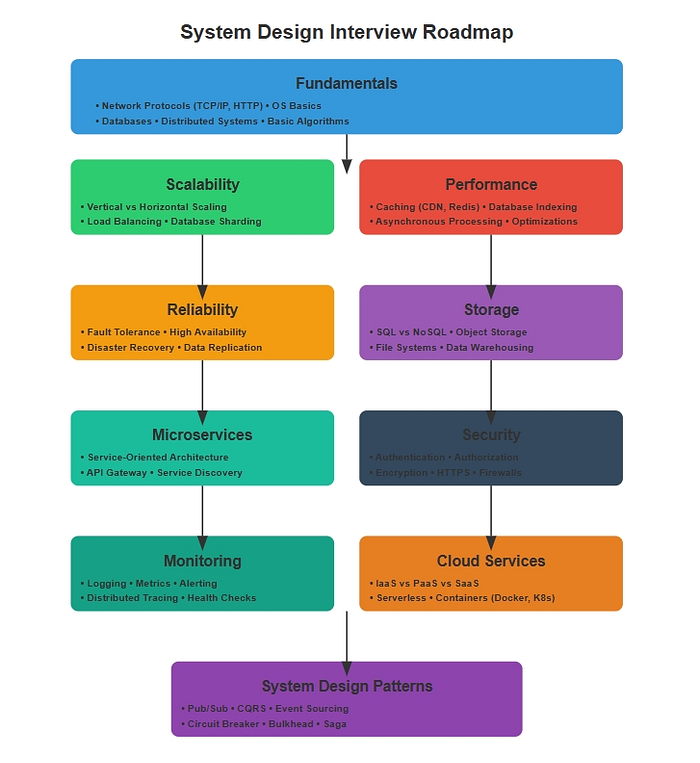63 個專案實戰,寫出作品集,讓面試官眼前一亮!
> 💡*現存最瘋狂、最荒謬的 Python 腳本——以及它們為何令人恐懼。* 他們寫程式碼,卻打破現實 ------------ 讓我們明確一點:Python 不僅僅是初學者教程和無害資料腳本的語言。 這是現代的魔法書。 有些人寫的咒語非常強大,甚至可能破壞了現實規則。 ...
系統設計會讓人感覺非常困難——直到你坐下來掌握驅動實際應用的核心概念。這 25 個基礎概念構成了 80% 的系統設計面試中出現的 20% 的知識。一旦你掌握了它們,一切就會變得順利。 --- ### 1.客戶端-伺服器架構 每個 Web 應用程式的支柱。您的手機、瀏覽器或應用程式與...
看到一篇滿猛的文章 ### The 7 Levels of Laravel Optimization: From Rookie to Optimization Overlord — with Benchmark — 98% reduction https://summonshr.medi...
揭露:本貼文包含附屬連結;如果您透過本文提供的不同連結購買產品或服務,我可能會收到報酬。  系統設計聽起來讓人難以接受。如果您是一位決定學習系統設計的工程師,本部落格將幫助您從基本主題的結構化計劃開始。 ...
*揭露:本貼文包含附屬連結;如果您透過本文提供的不同連結購買產品或服務,我可能會收到報酬。* [](https:/...
我們建立了[pgai Vectorizer](https://github.com/timescale/pgai/)來簡化 AI 應用程式的嵌入管理——而無需單獨的資料庫或複雜的基礎設施。自推出以來,開發人員已經在 Timescale Cloud 上建立了超過 3,000 個向量化器,還有更多是自架...
從事程式設計工作12年,最近半年,我開始大量使用AI寫程式。 令我吃驚的是,我發現自己的開發能力好像退步了。 所以今天想跟大家分享,工程師在用AI輔助工作時的一些注意事項。 ## 時間分配的變化與建議 首先是時間分配的建議。以前工程師上班時,我認為可以分成四種狀態:學習、實驗...
在我擔任[Vance](https://www.linkedin.com/posts/skysingh04_newintern-devops-aws-activity-7281995442278572033-zMkh)的 DevOps 工程師期間,我們在**AWS Glue**上執行了大約 80 個...
揭露:本貼文包含附屬連結;如果您透過本文提供的不同連結購買產品或服務,我可能會收到報酬。  ...
*揭露:本貼文包含附屬連結;如果您透過本文提供的不同連結購買產品或服務,我可能會收到報酬。*  ...
如果你曾經等得太久才等到資料庫查詢結束,你就知道性能緩慢的痛苦。 好消息是?[索引](https://en.wikipedia.org/wiki/Database_index)可以來拯救你! PostgreSQL 功能強大,但如果沒有 **適當的索引**,你的資料庫就像是在馬鈴薯上運行。...
嘗試在 2025 年選擇最佳的技術堆疊非常困難,尤其是在所有新框架發布的情況下。 這不僅僅是類型安全。您還需要良好的效能、可擴展性、開發人員體驗 (DX) 和體面的社區,這樣您就不會陷入困境。 今天,我們將了解為什麼 Next.js(前端)和 Encore.ts(後端)可能是現代開發人員...
隨著我們進入 2025 年,後端開發的格局正在發生根本性的轉變。當今的開發人員面臨著更複雜的決策,需要平衡傳統的穩定性和現代的效能需求。 ### 為什麼 2025 年框架選擇至關重要 選擇正確的後端框架的風險從未如此高。隨著人工智慧應用、即時處理要求和微服務架構的爆炸性增長,您的框架選擇...
DeepSeek-R1 在人工智慧界引起了不小的轟動。該模型由中國人工智慧公司[DeepSeek](https://www.deepseek.com/)開發,正在與 OpenAI 的頂級模型進行比較。 DeepSeek-R1 之所以令人興奮,不僅是因為它的功能,還因為它是開源的,任何人都可以下載並在...
*揭露:本貼文包含附屬連結;如果您透過本文提供的不同連結購買產品或服務,我可能會收到報酬。* [![資深開發人員必讀的 13 本軟體開發書籍](https://dev-to-uploads.s3.amazonaws.com/uploads/articles/jvpcy8669gg2y8ipn6...
*揭露:這篇文章包含附屬連結;如果您透過本文中提供的不同連結購買產品或服務,我可能會獲得補償。* ![開發人員必讀的 10 本演算法書籍](https://dev-to-uploads.s3.amazonaws.com/uploads/articles/5o91q4y97vdwts78nm7i...
隨著 IT 產業的進一步發展,前端開發變得更加活躍,採用最先進的工具、框架和人工智慧的進步。如果您打算在 2025 年進入該行業或在該行業取得進步,本路線圖將引導您了解必要的知識、資源和趨勢,以便在快速發展的前端開發行業中保持領先地位。 --- 1.**掌握基礎** ---------...
無論您是剛剛入門還是正在建立實際應用程式,開源工具都是開發人員的必備工具。它們使開發過程更加順暢、更快且更具協作性。 有這麼多可用的選項,找到適合工作的工具比以往任何時候都容易。 在本文中,我將向您介紹 5 個供後端開發人員在 2025 年使用的開源工具。 有些是新的,有些已經存在...
精選技術文章、免費程式設計資源、以及業界重要新聞!
也歡迎訂閱 YouTube 頻道,觀看每週二晚間的《CodeLove Talk》直播節目,一起討論軟體開發相關的話題!